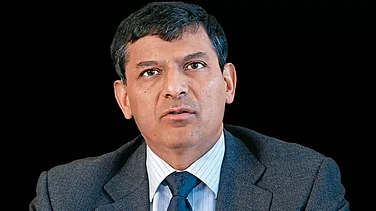Happening at the Scottish Event Campus (SEC) in the UK’s Glasgow, in partnership with Italy, the summit aims to bring nations under one roof to accelerate action towards the goals of the Paris Agreement and the UN Framework Convention on Climate Change (UNFCCC). Over 190 world leaders, along with tens of thousands of negotiators, government representatives, businesses and citizens will be participating in 13 days of talks, which started on October 31, around measures to mitigate the effects of climate change.
All You Need To Know About COP 26
It is that time of the year again when the focus is back on climate change with the 26th session of the Conference of the Parties or COP26 UN Climate Change Conference underway in the UK.
.jpg?w=801&auto=format%2Ccompress&fit=max&format=webp&dpr=1.0)
?The COP is the apex decision-making body of the UNFCCC that was formed in 1994. The nations that are part of the UNFCCC—197 currently—are represented at the COP which meets every year and reviews the implementation of the Convention’ measures or any other legal instruments that the COP has adopted in the past. The first COP meeting was held in Germany’s Berlin in March 1995. India had hosted the COP8 in 2002.
What Are The COP 26 Goals?
This year, it has set out to achieve four goals—secure global net-zero by mid-century and keep 1.5 degrees within reach (a target agreed upon in the Paris agreement at the COP21 meet in Paris in 2015), adapt to protect communities and natural habitats, mobilise finance and work together to deliver.
The world leaders will also look to finalise the Paris Rulebook that will make the Paris Agreement operational. Nations will also be asked to set 2030 emissions reductions targets in accordance with the net-zero target by the middle of the century.
One of the things that the COP26 has taken a keen interest in this year is climate financing.
What is Climate Financing?
?As per the UNFCCC, climate finance refers to local, national or transnational financing—drawn from public, private and alternative sources of financing—that seeks to support mitigation and adaptation actions that will address climate change.
It brings back focus on how large-scale investments are required to significantly reduce emissions and also for the adaptation to the adverse effects of climate change.
The UNFCCC says that as part of a global effort, the developed country should ‘continue to take the lead in mobilising climate finance from a wide variety of sources, instruments and channels, noting the significant role of public funds, through a variety of actions, including supporting country-driven strategies, and taking into account the needs and priorities of developing country parties.
COP25 in Paris had concluded with developed countries intending to continue their existing collective mobilisation goal through 2025. It was also decided that before COP 2025, a new collective quantified goal would be set from a floor of $100 billion per year.
Developed countries had also promised to mobilise at least $100 billion in climate finance per year by 2020 and the UNFCCC has now asked them to make good on their promise.
It has also asked international financial institutions to play their required part in the quest to secure the global net-zero goal.
While addressing the world leaders at the ‘High-Level Segment for Heads of States and Government' at the UN COP26 on November 2, Prime Minister Narendra Modi had said, "India expects developed countries to make USD 1 trillion available as climate finance as soon as possible. As we track the progress of climate mitigation, we must also track climate finance. Justice would truly be served if pressure is put on those countries that have not lived up to their climate finance commitments,".?
Modi also reiterated that developed nations must fulfil the promised $1 trillion as climate finance, saying this should be tracked the same way as climate mitigation.

























